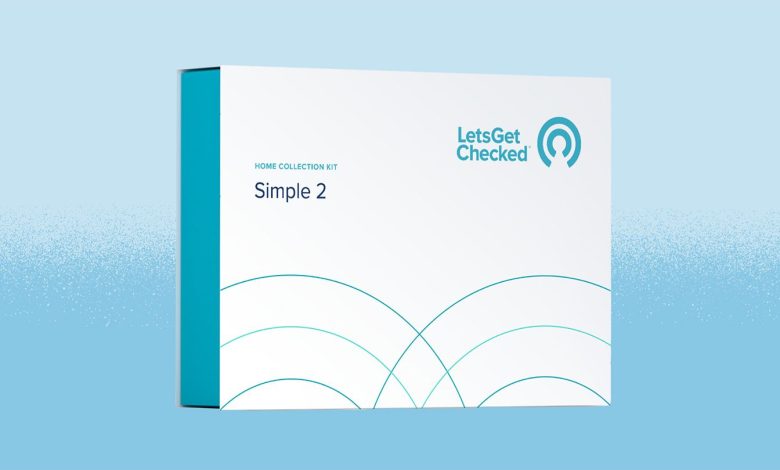FDA Approves At-Home Test for Chlamydia and Gonorrhea

[ad_1]
The U.S. Food and Drug Administration (FDA) has approved a test for chlamydia and gonorrhea that people can buy without a prescription and use at home. While there are already several at-home diagnostic tests for sexually transmitted infections (STIs) on the market, this is the first to gain FDA approval since tests for HIV, the FDA said in a statement.
The Simple 2 Test will be sold over-the-counter and is intended for use by adults 18 and older, the FDA added.
“This authorization marks an important public health milestone, giving patients more information about their health from the privacy of their own home,” said Jeff Shuren, MD, the director of the FDA’s Center for Devices and Radiological Health, in the statement. “We are eager to continue supporting greater consumer access to diagnostic tests, which helps further our goal of bringing more healthcare into the home.”
While both chlamydia and gonorrhea can be easily treated with antibiotics, they can also cause serious health complications, including infertility, if they go undiagnosed and untreated, according to the Centers for Disease Control and Prevention (CDC).
Condoms Can Help Prevent STIs, but People Are Using Them Less
Chlamydia and gonorrhea are the most common sexually transmitted infections, and they have become more prevalent in recent years, according to the CDC. Both infections can be spread through vaginal, anal, or oral sex — but the risk of transmission can be reduced by condom use.
These infections are becoming more widespread in part because HIV — a major motivator for condom use in the past — has become easier to prevent and treat in recent years with a medication regimen known as PrEP, or pre-exposure prophylaxis, says Alan Katz, MD, MPH, a professor emeritus of public health at the University of Hawaii.
Dr. Katz points out additional reasons for the increase in STIs, including the ubiquitous nature of dating apps, intersecting problems with substance abuse, suboptimal federal and state funding for STI prevention programs, and limited access to healthcare and sexual health services for marginalized populations.
STIs on the Rise Among People 55 and Older
While the total number of STIs is highest among people 15 to 29, an analysis found that rates of chlamydia, gonorrhea, and syphilis infections were increasing fastest for people 55 and older. Among those 65 and up, for example, rates of these infections had more than doubled in the previous five years.
According to reporting from Northwest Public Broadcasting, there are several possible reasons for these increases:
- Seniors may be less knowledgeable about safe sex practices than younger adults and teens, who are more likely to have received up-to-date sex education. For this same reason, seniors may underestimate their risk for infection.
- With more pressing health concerns like heart disease and diabetes, healthcare providers may be less likely to ask seniors about new sexual partners or suggest screening.
- Since older adults are not worried about pregnancy, they may be less inclined to use condoms.
How to Use the New At-Home Test for Chlamydia and Gonorrhea
To use the Simple 2 Test, a person will need to collect a vaginal swab or urine specimen, then ship it to a lab for analysis with included return packaging. Users complete a health questionnaire online, then receive their lab test results online two to five days after the sample arrives at the lab, with follow-up from a healthcare provider in positive or inconclusive cases.
A big upside of the new at-home test is that people can find out sooner that they have an infection and then seek treatment, says William Miller, MD, PhD, MPH, a professor of epidemiology at the Gillings School of Global Public Health at the University of North Carolina in Chapel Hill.
“Knowing that you have an infection allows you to stop the transmission chain, as long as you don’t have sex knowing that you have an infection,” Dr. Miller says. “It may help reduce the duration of symptoms too, if someone discovers that they have chlamydia or gonorrhea and then gets treated.”
LetsGetChecked, the company behind the new home test, sells it online for $99. The test is also available from Amazon for $59.
One open question is whether some people who are at higher risk for sexually transmitted infections like chlamydia and gonorrhea — including teens, young adults, racial and ethnic minorities, and sexual and gender minorities — will be able to access or afford the new at-home tests, says Melissa Simon, MD, MPH, an obstetrician and gynecologist, professor, and the director of the Center for Health Equity Transformation at Northwestern Medicine in Chicago.
“While a take-home test for gonorrhea and chlamydia is great to have available, it is not clear if the tests’ availability will have a high uptake in populations most at risk,” Dr. Simon says. “If this test is issued for free or at very low cost, it likely will have greater uptake.”
[ad_2]




